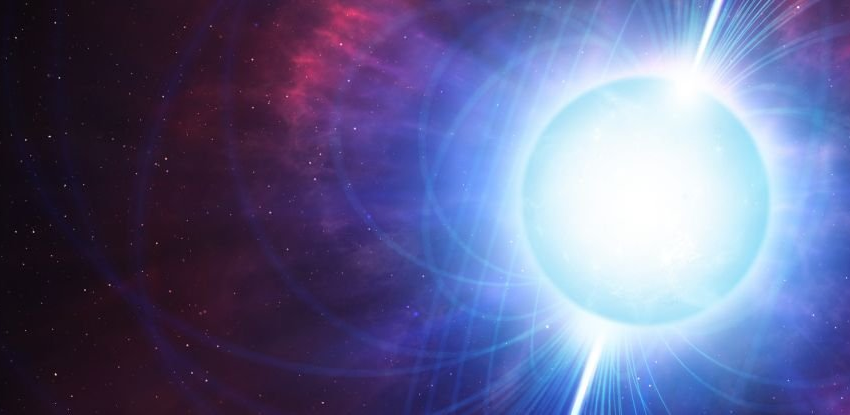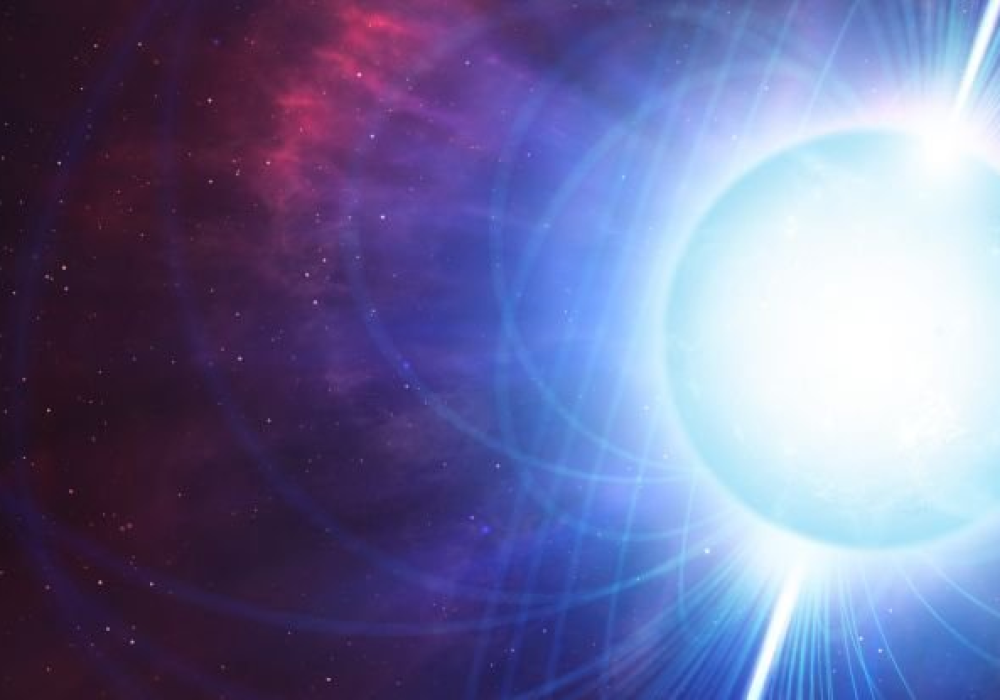In a nearby galaxy, a rare kind of dead star erupted into a giant outburst.
This in itself may not be so peculiar; but, for the first time, changes in its brightness during this event have been documented in detail, giving scientists a window into understanding the processes that produce these colossal flares.
The star is a type of extreme neutron star called a magnetar, located up to 13 million light-years away in the Silver Coin galaxy (NGC 253), and at the 160-millisecond peak of its eruption, it emitted as much energy as the Sun does in 100 millennia.
“Even in an inactive state, magnetars can be one hundred thousand times more luminous than our Sun, but in the case of the flash that we have studied – the GRB 2001415 – the energy that was released is equivalent to that which our Sun radiates in one hundred thousand years,” said astrophysicist Alberto J. Castro-Tirado of the Institute of Astrophysics of Andalusia in Spain.
All stars have their quirks and peculiarities, but magnetars have to be close to the most peculiar. They’re neutron stars, which are already fascinating – the collapsed, dead cores of once-massive stars, up to around 2.3 times the mass of the Sun, packed into an ultradense sphere just 20 kilometers (12.4 miles) across.
What a magnetar brings to the table is an absolutely crackers magnetic field. These magnetic structures are around 1,000 times more powerful than a typical neutron star’s, and a quadrillion times more powerful than Earth’s, and we don’t know how or why they form.
We know that they result in some pretty interesting behaviors not seen in average neutron stars. The inward pressure of gravity competes with the outward pull of the magnetic field, resulting in unpredictable and powerful magnetar quakes. These quakes, scientists now believe, are the strongest contender for the mysterious signals known as fast radio bursts, emitting, in milliseconds, more radio energy than 500 million Suns.
But these quakes are erratic, unpredictable, which means they’ve been challenging to observe and characterize. Cue 15 April 2020, when an instrument on the International Space Station designed to monitor Earth’s atmosphere picked up something much more distant. That was the event called GRB 2001415, a gamma-ray burst emitted, it was later determined, by a magnetar in another galaxy.
Now, using artificial intelligence, a team led by Castro-Tirado has analyzed the eruption in detail, measuring precisely the oscillations in brightness produced by the magnetar during the eruption.
“The difficulty lies in the brevity of the signal, whose amplitude rapidly decays and becomes embedded in background noise. And, as it is correlated noise, it is difficult to distinguish its signal,” explained astrophysicist Victor Reglero of the University of Valencia in Spain.
“The intelligence of the system that we have developed at the University of Valencia is what has allowed, together with sophisticated data analysis techniques, to detect this spectacular phenomenon.”
According to the team’s analysis, the oscillations are consistent with Alfvén waves in the magnetar’s magnetosphere triggered by a quake in the crust. These waves bounce back and forth between the footprints of their magnetic field lines, releasing energy as they interact in a process called magnetic reconnection, which we know results in flares in our own star.
By measuring the oscillations, the team determined that the volume of the magnetar eruption was, in magnitude, equal to or even greater than the volume of the magnetar itself. That’s pretty danged spectacular, especially considering the gulf of space across which the emission traveled. It’s the most distant magnetar for which such an eruption has been observed.
“Seen in perspective, it has been as if the magnetar wanted to indicate its existence to us from its cosmic solitude, singing in the kHz with the force of a Pavarotti of a billion suns,” Reglero said. “A true cosmic monster!”
The team’s research has been published in Nature.










